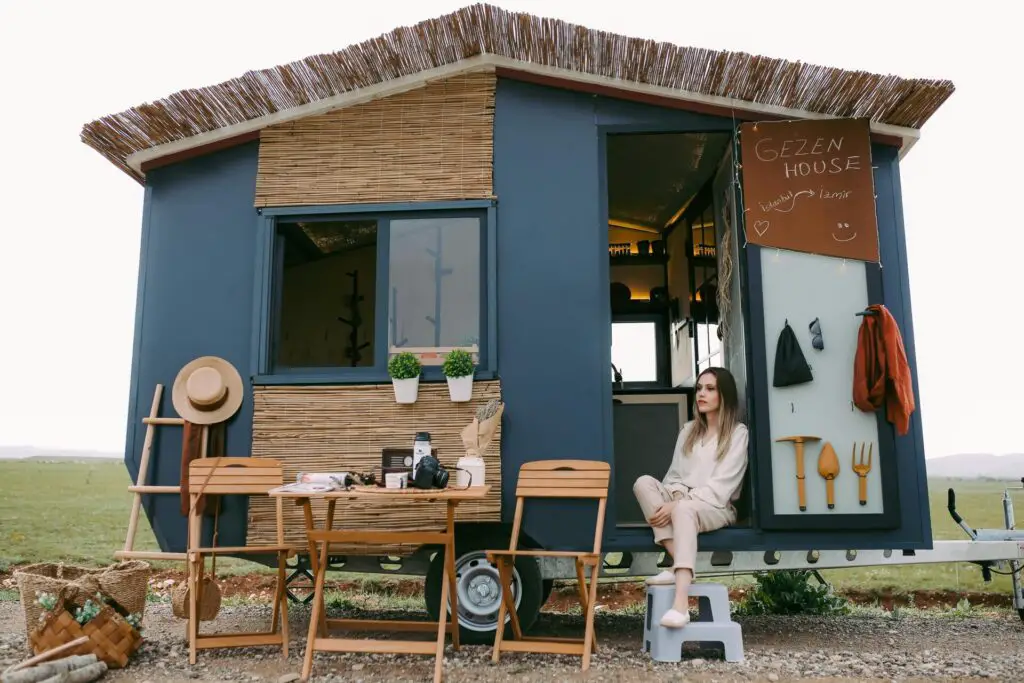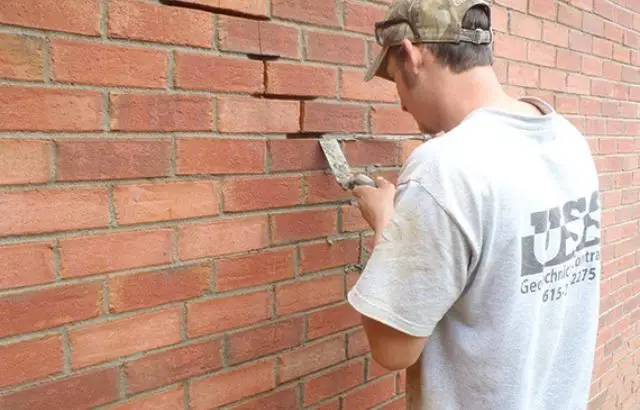Building stairs for a mobile home is a straightforward project. You need basic tools and a clear plan. Stairs are essential for the safety and convenience of entering and exiting your mobile home. Whether you’re replacing old stairs or building new ones, the process is simple. In this guide on how to build stairs for a mobile home, we’ll help you understand the steps involved. From measuring the space to choosing the right materials, we’ll cover everything.
You’ll gain the confidence to complete this project on your own. Safety tips and handy advice will ensure your stairs are sturdy and durable. Let’s get started on building those stairs for your mobile home!
Importance Of Proper Stairs
Proper stairs are essential for safe entry and exit from your mobile home. They need to be sturdy and well-constructed to support weight and withstand daily use. Have you ever stumbled on poorly built steps? It’s not just inconvenient; it’s dangerous. Sturdy stairs can prevent accidents and give you peace of mind. In addition, well-built stairs can add to your home’s value and curb appeal. Imagine how a well-crafted set of steps can transform the look of your entryway.
How to Build Stairs for a Mobile Home

Overview Of Materials Needed
Before you start building, gather all the necessary materials. You’ll need items like treated lumber, concrete blocks, screws, and a good saw. Treated lumber is essential because it resists rotting and pests, ensuring your stairs last longer. Concrete blocks provide a stable foundation. They keep the stairs level and secure. Don’t forget screws and a saw; they’re the tools that bring your project together. Having the right materials on hand can make the process smoother. It’s frustrating to stop mid-project because you’re missing something. So, take a moment to double-check your list before you begin. Building stairs might seem daunting, but with the right preparation and materials, it’s entirely manageable. Are you ready to take on this rewarding project? Let’s get started!
Planning Your Staircase
Building stairs for a mobile home requires careful planning. Choose durable materials and ensure precise measurements. Prioritize safety with secure handrails.
Planning Your Staircase Building stairs for your mobile home is a practical project. It requires careful planning and attention to detail. Get it right, and you’ll enjoy safe and sturdy access to your home.
Measuring Your Mobile Home
Start by measuring the height from the ground to the entrance of your mobile home. Use a tape measure for accuracy. Write down the measurement in inches. Next, decide on the height of each step. A typical step height ranges between 7 to 8 inches. Divide the total height by your chosen step height to determine the number of steps you’ll need. Measure the width of the entrance to ensure your stairs fit perfectly. Consider the width of the steps and any railings.
Designing The Stair Layout
Sketch a basic design of your stairs on paper. Include the number of steps and their dimensions. Add railings if needed for added safety. Choose the materials you’ll use. Pressure-treated wood is a popular choice for outdoor stairs. It’s durable and resistant to weather conditions. Think about the landing area at the bottom of the stairs. Make sure it’s spacious enough for easy access. Consider adding a small landing halfway up the stairs if your mobile home is particularly high. This will make the climb easier and safer. Finally, plan for any additional features like lighting or decorative elements. These can enhance both safety and aesthetics. Planning your staircase thoughtfully ensures a smooth building process. What features will you prioritize in your stair design?
Gathering Tools And Materials
Building stairs for a mobile home requires the right tools and materials. Proper preparation ensures the project goes smoothly. Before starting, gather everything you need. This makes the process easier and faster.
Essential Tools List
Having the right tools is crucial. Here is a list of essential tools:
- Measuring tape
- Circular saw
- Hammer
- Drill
- Level
- Framing square
- Screwdriver
- Wrench
- Safety goggles
- Gloves
Selecting The Right Materials
The quality of materials affects the durability of your stairs. Choose pressure-treated wood for the best results. This wood resists rot and insects. You will need:
- Stringers
- Treads
- Risers
- Nails or screws
- Concrete for the base
Consider the climate in your area. Use weather-resistant materials if needed. This ensures your stairs last longer. Proper materials make a big difference.
Preparing The Site
Building stairs for your mobile home is a project that requires careful planning and preparation. Before you even think about picking up a hammer, you need to prepare the site properly. This step is crucial for ensuring the safety and stability of your new stairs.
Clearing The Work Area
First, take a good look at the area where you plan to build the stairs. Remove any debris, rocks, or vegetation that might be in the way. This will give you a clear, flat surface to work on.
Imagine trying to build on uneven ground; it would be like trying to balance on a see-saw. You want your foundation to be solid, so don’t skip this step. Use a shovel or a rake to level the ground as much as possible.
If you’re working on a slope, consider digging into the hillside to create a flat spot. It’s a bit more work but well worth the effort. A flat, stable area will make the rest of the project much easier.
Setting Up A Safe Workspace
Safety should always be your top priority. Before starting any construction, set up a safe workspace. Place your tools in a convenient location where you won’t trip over them.
Wear safety gear like gloves and goggles. This might seem like overkill, but a small splinter or a flying piece of wood can cause serious injury.
Make sure you have good lighting, especially if you’re working late in the day. A well-lit area will help you see what you’re doing and avoid mistakes. Ask yourself: Is my workspace safe enough for my family to be around? If the answer is no, make the necessary changes.
Preparing the site may not be the most exciting part of building stairs, but it’s the foundation for everything else. Take your time and do it right. You’ll thank yourself later when your stairs are sturdy and safe.
Building The Stair Stringers
Building the stair stringers is a key step in constructing stairs for a mobile home. Stringers are the backbone of your stairs. They support each step and ensure stability. This guide will help you cut and fit the stringers correctly. Let’s dive into the process.
Cutting The Stringers
Start with measuring the height from the ground to the entrance. This is your total rise. Next, decide on the height of each step, known as the rise of each step. Divide the total rise by the rise of each step to find the number of steps needed.
Use a framing square to mark the rise and run on a 2×12 board. The run is the depth of each step. Mark each step on the board. Cut along these lines using a circular saw. Make sure to cut accurately for a snug fit.
Ensuring Proper Fit
Place the cut stringers against the mobile home to check the fit. Ensure that they sit evenly on the ground and against the home. Adjust as needed for a secure fit.
Next, attach the stringers to the mobile home using screws or brackets. This will keep them stable. Make sure the stringers are level. Use a level tool to check.
Finally, test the stringers by standing on them. They should feel firm and stable. If they wobble, adjust the screws or brackets until they are secure. This ensures safe and sturdy stairs.
Assembling The Stairs
Building stairs for a mobile home might seem daunting. But with the right steps, it can be manageable. Assembling the stairs is a crucial part of this process. Follow these steps to ensure your stairs are safe and sturdy.
Attaching Treads And Risers
Start by attaching the treads to the stringers. The treads are the horizontal parts where you step. Ensure they are level and secure. Use screws or nails to fix each tread in place. Space them evenly for a uniform look.
Next, attach the risers. These are the vertical parts between each tread. They add stability to the structure. Secure each riser with screws or nails. Check that each riser is vertical. This ensures the stairs look and function well.
Securing The Staircase
Ensure the staircase is attached securely to the mobile home. Use brackets or heavy-duty screws. This will keep the stairs in place. Check the stability of each step. Wiggle the stairs to see if they move. Reinforce any shaky parts.
Install handrails if needed. Handrails provide extra safety. Attach them to both sides of the staircase. Use screws to secure the handrails. Check their stability. This completes the assembly process for your mobile home stairs.
Installing Handrails And Balusters
Installing handrails and balusters is a critical step in building safe and attractive stairs for your mobile home. Not only do they provide necessary support and stability, but they also add a touch of style to your stairway. Here’s how you can choose and install the right handrails and balusters with ease.
Choosing The Right Handrails
When selecting handrails, consider the material and design. Wood is classic and warm, but metal can offer a sleek, modern look. Think about the overall aesthetic of your home.
Make sure the handrail is comfortable to grip. You don’t want something too bulky or too slim. Test out different options if possible.
Consider the durability of the material. For outdoor stairs, weather-resistant materials like treated wood or metal are best.
Proper Handrail Installation
Start by measuring the height of your stairs. The handrail should be between 34 and 38 inches above the stair tread. This ensures it’s at a comfortable height for most people.
- Install the brackets first. They should be evenly spaced along the length of the handrail. Use a level to make sure they are properly aligned.
- Secure the handrail to the brackets. Make sure it’s tightly fastened and doesn’t wobble. Test it by giving it a firm shake.
- Have you ever seen a handrail that looks slightly off? It can be distracting, right? Proper alignment makes all the difference.
Installing Balusters
- Balusters, or spindles, should be installed so that there is no more than a 4-inch gap between them. This prevents small children from slipping through.
- Mark the positions on the stair treads and secure each baluster with screws or brackets. Make sure they are vertical and evenly spaced.
- Double-check the stability of each baluster. They should be firm and not move when you apply pressure.
- What’s the best handrail material you’ve worked with? Share your experiences in the comments below. Your insights can help others make the right choice!
Maintenance Tips
Once you’ve built the stairs for your mobile home, it’s crucial to keep them in good condition. Regular maintenance ensures safety and extends the lifespan of your stairs. Here are some practical tips to help you maintain them effectively.
Routine Inspection
Regularly inspect your stairs for any signs of wear and tear. Look for loose nails, screws, or bolts that might need tightening. Check for any signs of wood rot, especially if your stairs are made of wood.
Examine the handrails and balusters to ensure they are secure. If you have metal stairs, watch out for rust or corrosion. Consider scheduling a monthly inspection to stay on top of any potential issues.
I once ignored a small crack on my stair tread, thinking it was insignificant. A few weeks later, the crack worsened, making the stairs unsafe. Regular inspections can prevent such problems from escalating.
Repairing Damaged Parts
Promptly repair any damaged parts of your stairs. Replace cracked or rotten wood to maintain the structural integrity. If you notice rust on metal stairs, sand it off and apply a fresh coat of paint to prevent further corrosion.
Ensure you have the right tools and materials for repairs. A small toolbox with essential items like screws, nails, wood filler, and sandpaper can be handy. Are your stairs covered with carpet? Make sure the carpet remains securely attached to avoid tripping hazards.
Once, I had a loose handrail, and I procrastinated fixing it. It wasn’t until a friend almost fell that I realized the urgency. Don’t wait for accidents to happen—act swiftly when you spot issues.
Remember, well-maintained stairs not only look good but also ensure safety for everyone using them. So, take a few minutes each month to inspect and repair your stairs. It’s worth the effort!
Frequently Asked Questions
How Do You Plan Stairs In A House?
Plan stairs by measuring the rise and run. Ensure proper headroom and width. Follow local building codes. Choose materials and design matching your home. Install sturdy handrails and safety features.
What Is The Standard Size Of Steps For A Mobile Home?
The standard size of steps for a mobile home typically includes a 7-inch rise and an 11-inch tread depth.
What Is The Average Height Of Mobile Home Steps?
The average height of mobile home steps ranges from 28 to 32 inches. This measurement ensures safe and comfortable access.
How Do You Make Easy Stairs?
Build easy stairs by measuring height, calculating steps, and cutting treads and risers. Assemble using screws. Ensure stability and safety by checking each step’s alignment. Use a level to maintain balance, and finish with a handrail. This method ensures quick, efficient construction.
Conclusion
Building stairs for a mobile home is simpler than it seems. Start with clear measurements and a solid plan. Use quality materials for safety and durability. Follow each step carefully to ensure stability. Double-check everything to avoid mistakes. Completing the task brings satisfaction and convenience.
Enjoy easy access to your mobile home with sturdy stairs. Share your experience with friends or family. Help them build their own stairs with confidence. Good planning and patience make the process smooth. Stairs can transform your home experience. Ready to take on the challenge?




